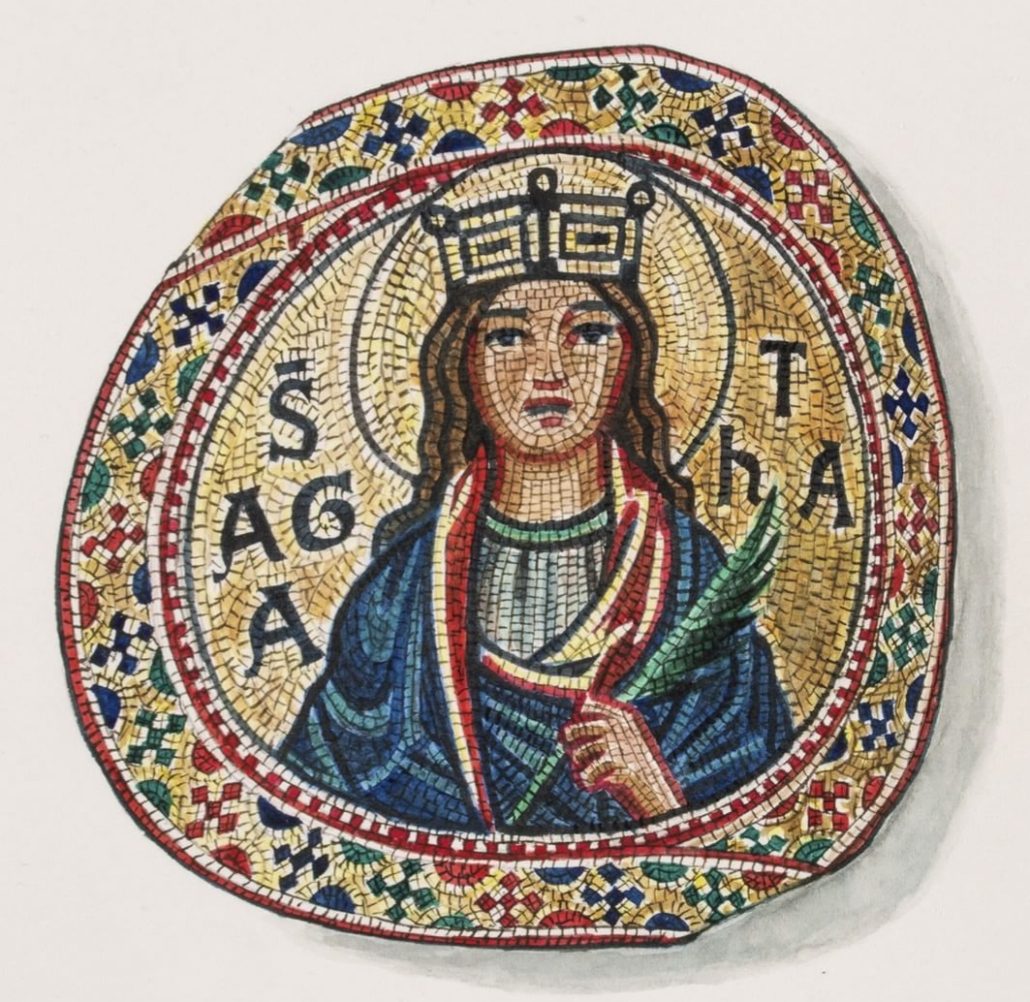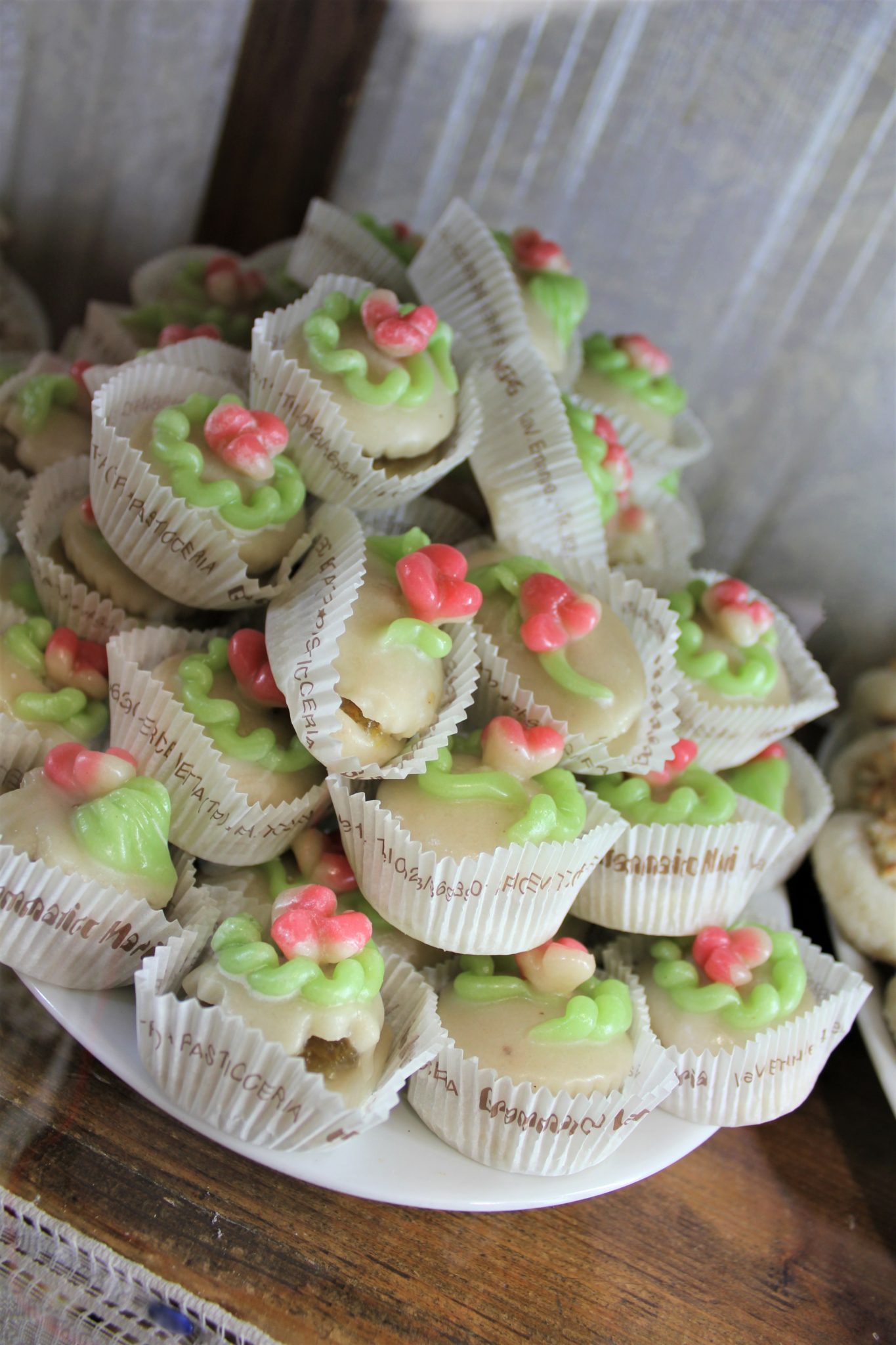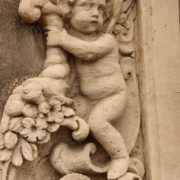What’s so special about “Minni Di Virgini” from Catania
What are “Minni Di Virgini”
Minni di virgini, cassata di Sant’Agata, or minni di Sant’Agata typically are made of a round marzipan shell moulded into a smooth half sphere. Looking like the shape of a small breast they are often served with white porcelain sheen icing topped with candied cherries. There are a couple of varieties you will find particularly in Catania where they are celebrated on the 5th of February for St Agatha’s saint day. According to experts, there are a couple of versions of these little cakes most of them have an outer layer of short crust pastry but their fillings change, one is filled with pastry cream or a type of vanilla custard, covered in pink icing and topped with a candied cherry, the other is traditionally filled with sweet sheeps milk ricotta cheese, chocolate, and candied citron or candied squash. Not to be confused with the “Sicilian cassata” with is of a similar combination although using sponge cake and covered with marzipan. The other Minni di Virgini you will find is filled with a type of cream filling flavored with chocolate and candied orange peel.
The story behind these pastries is that they were inspired by Saint Agatha, who is embraced as the patron saint of Catania. St. Agatha had her breasts cut off in martydom and is depicted forever carrying them on a plate. The pastries called ‘virgin’s breasts’ were created in her honor by the sisters of the Monastero della Vergine in Palermo and later adapted by the Catalians who, in the interest of anatomical correctness, added the cherry on top. For reasons of modesty, minni di virgini were called cassatine by the nuns. At one time, minni di virgini were baked in monasteries, now they are available in the pasticcerie or pastry shops though out Sicily but particularly in Catania.
The Story of St Agatha

St. Agatha, also known as Agatha of Sicily, is one of the most highly venerated virgin martyrs of the Catholic Church. It is believed that she was born around 231 in either Catania or Palermo, Sicily to a rich and noble family.
From her very early years, the notably beautiful Agatha dedicated her life to God. She was living as a Christian in Catania during a period of intense religious persecution, she became a consecrated virgin, a state in life where young women choose to remain celibate and give themselves wholly to the Church in a life of prayer and service. That did not stop men from desiring her and making unwanted advances toward her.
One of the men who desired Agatha was Quintianus, a high diplomatic. He thought he could force her to turn away from her vow and force her to marry. His persistent proposals were consistently spurned by Agatha, so Quintianus, knowing she was a Christian during the persecution of Decius, had her arrested and brought before the judge. He was the Judge.
He expected her to give in to his demands when she was faced with torture and possible death, but she simply reaffirmed her belief in God by praying.
To force her to change her mind, Quintianus had her imprisoned in a brothel. Agatha never lost her confidence in God, even though she suffered a month of assaults and efforts to get her to abandon her vow to God and go against her virtue. Quintianus heard of her calm strength and ordered that she be brought before him once again. During her interrogation, she told him that to be a servant of Jesus Christ was her true freedom.
Enraged, Quintianus sent her off to prison instead of back to the brothel a move intended to make her even more afraid, but it was probably a great relief to her. Agatha continued to proclaim Jesus as her Savior, Lord, Life and Hope. Quintianus ordered her to be tortured. He had her stretched on a rack to be torn with iron hooks, burned with torches, and whipped. Noticing Agatha was enduring all the torture with a sense of cheer, he commanded she be subjected to a worse form of torture, that her breasts be cut off with pincers – often seen with her in painting and religious images of the saint.
He then sent her back to prison with an order of no food or medical attention. But the Lord gave her all the care she needed. He was her Sacred Physician and protector. Agatha had a vision of the apostle, St. Peter, who comforted her and healed her wounds through his prayers.
After four days, Quintianus ignored the miraculous cure of her wounds. He had her stripped naked and rolled over naked over hot coals and fragments of broken pottery. When she was returned to prison, Agatha prayed, tradition has it that, although her breasts were miraculously restored by Saint Peter, she died on February 5, 251,
She is commonly featured in religious art with shears, tongs, or breasts on a plate.
The History of the Nuns and Sicilian Sweets

Minni di virgini have been a specialty of Sicilian convents for hundreds of years, but in recent history, they’ve become associated with Catania’s celebrations. It might seem odd that convents or Catholic festivities would embrace breast-shaped cakes. In Giuseppe di Lampedusa’s 1958 novel The Leopard, the narrator recoils in horror as he beholds minni di virgini, which he calls “a profane caricature of St. Agatha.”
One of the easiest ways to access the saint is by eating minni di Sant’Agata, especially since they’re available year-round in Catania. It’s impossible to pinpoint when, exactly, these anatomical cakes went from pagan treat to saintly sweet, but Sicilian nuns are credited with popularizing them. Before they became associated with Agatha, early versions of the cakes were simply known as minni di virgini, which may imply that they were a specialty of the nuns of the Monastero di Vergini in Palermo.

Plato, plumbing, and pastry might not be around today if not for Italian monks and nuns, who are credited with saving Western culture in the tumultuous centuries known as the Dark Ages. As barbarian hordes conquered and reshaped western Europe, monasteries and convents became safe havens. Classical literature was protected, studied, and translated by scholar monks.
They preserved medicinal knowledge from the ancient world and used Roman plumbing systems to pull water through their cloister fountains. Nuns took in orphans and raised them. (Esposito, meaning “exposed,” is a common Italian surname given to babies left on the doorsteps of convents.) They also baked elaborate, labor-intensive pastries from ancient recipes that they sold to the public to support themselves.
Not only were the convents bastions of tradition; they were (and are, where they remain) the most authentic source for classic Sicilian sweets. Some monastries still producing sweets are monastery of Sant’Andrea in Palermo making cannoli. In Agrigento, the Santo Spirito monastery of cloistered Cistercian nuns, famed for the sweet couscous with crushed pistachios that’s made there. But perhaps the most famous baker is Maria Grammatico, in the mountain peak town of Erice. Grammatico’s life story has been recounted in the book Bitter Almonds, which she coauthored with Mary Taylor Simeti (William Morrow & Co., 1994). She was raised in an orphanage run by Franciscan sisters, where she helped in the preparation of sweets. Deciding against the nun’s life, Grammatico opened a modest pasticceria, which has since grown into one of the largest pastry businesses in Sicily.
Grammatico, who is now 70, makes an amazing assortment of traditional cookies and small pastries, but her true talent lies in frutta di Martorana (marzipan fruit, named after the Palermo convent where they originated) shaped from almonds she grinds into a paste daily and paints in realistic colors.










Leave a Reply
Want to join the discussion?Feel free to contribute!